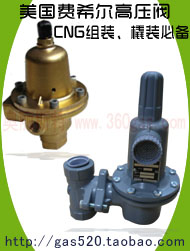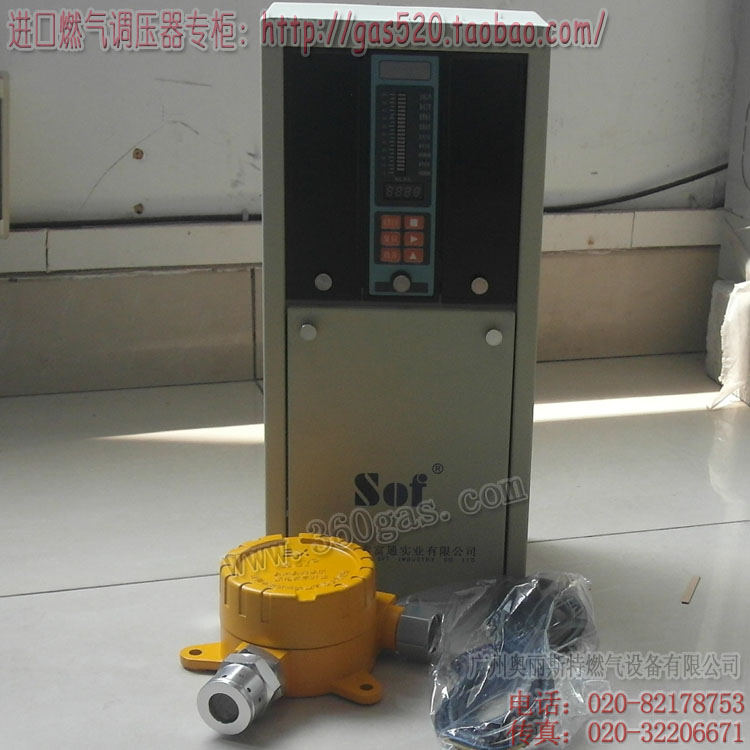位置:首页 > 燃气资讯 > 2014 an Important
2014 an Important Year for Natural Gas Fuel
浏览次数 813 , 日期 2015-01-08 , 燃气设备 加入收藏
NGV Global has argued for some time that natural gas is becoming a mainstream fuel, not just an alternative. This year, the news of our industry has originated in many different regions, and although each region displays different characteristics and stages of development, it is clear to see natural gas for transportation is gathering momentum, no longer just confined to on-road transportation but to marine, off-road, rail and other modes.
Some of 2014’s highlight, notated per region, are listed below.
AFRICA
New beginnings are evident in Africa.
Prins Autogassystemen, recently acquired by Westport, holds a unique joint venture position in Nigeria with a large industrial customer, operating one of the largest truck fleets in Africa – moving to natural gas trucks built by one of China’s largest truck manufacturers using Prins’ dual-fuel systems.
The Government of Equatorial Guinea has entered into an agreement that will implement a compressed natural gas (CNG) plant and refilling stations to support a new fleet of CNG buses to be acquired for the cities of Malabo and Bata.
At the UN Climate Summit in New York, the African Development Bank affirmed its $US 175 billion commitment to financing of sustainable transport projects in Africa over the next ten years.
Algeria is planning to implement liquefied natural gas (LNG) as a marine fuel, to be used by ships to replace the traditional fuel and reduce operating costs, including fishing.
Commuters in Johannesburg will soon be commuting on a new fleet of CNG buses. Currently there are about 400 taxis and buses operating on CNG in the state of Gauteng, where Johannesburg is located.
ASIA
The breadth of Asia, from the Middle East to the Pacific, is bustling with activity.
China is perhaps the busiest of all Asian countries and will get busier. In December the Asian Development Bank (ADB) signed loans of up to $450 million to help China scale up its use of natural gas for transport to curb fast-rising emissions from automobiles and river freight. The planned output is big: 600 compressed natural gas (CNG) stations, 200 liquefied natural gas (LNG) refuelling stations, and 20 LNG filling stations for river vessels by 2018.
New LNG corridors are planned for heavy duty transport. China LNG Group has expressed intent for direct investment in a minimum 100,000 LNG-fuelled trucks and indirect-investment in 200,000 LNG-fuelled trucks by 2020. In March, Chart Industries agreed to provide equipment for 50 LNG fuel station over 30 months.
Israel, Malaysia, Indonesia, UAE and Australia are holding in-country discussions on ways to stimulate natural gas for transportation. India continues to expand CNG refuelling infrastructure and is testing natural-gas fuelled locomotives.
Sharjah in the United Arab Emirates is planning to convert heavy vehicles like forklifts and cranes at construction sites to CNG. Sydney-based AGL Energy Limited announced plans in April to roll out CNG refuelling stations across Australia’s east coast.
OEM’s Tata Motors, Maruti Suzuki, Honda and Nissan have expanded their range of natural gas vehicles.
Canada’s Westport Innovations and Tata Motors Limited of India launched a new spark-ignited (SI) natural gas 3.8L turbocharged engine featuring the Westport WP580 Engine Management System (EMS).
Marine Developments are forging ahead in Asia. Korea’s DSME, Japan’s KHI and China’s Hudong-Zhonghua Shipyard are just three of many ship builders with dual-fuel newbuildings underway, including 180,000㎥ LNG carriers.
Japan’s Niigata Power Systems Co., Ltd has had its new dual-fuel engine approved by Class NK, planned for first installation in a tugboat. And DNV approval was granted to Kawasaki Heavy Industries (KHI) for its dedicated 2 MW natural gas engine.
LNG-fuelled tugboats with Wärtsilä dual-fuel engines are operated by Drydocks in Dubai. In Qatar, DNV GL and shipyard Nakilat-Keppel Offshore & Marine have agreed to jointly promote LNG as fuel within the maritime and offshore industry.
Finally, the United Arab Shipping Company has increased its order book to 17 LNG-ready newbuildings, an investment of more than $2 billion.
EUROPE
Policy development and implementation, LNG bunkering facilities, LNG for heavy duty transport and dual-fuel ship-building have dominated European development this past year.
In September, New EU rules were adopted to ensure the build-up of alternative refuelling points across Europe. In October, the EC adopted an FQD proposal that obliges suppliers to reduce by 6% the life cycle greenhouse gas intensity of fuel supplied for use in road vehicles by 2020. In November, the EC reiterated its position that alternative fuels are urgently needed to break the over-dependence of European transport on oil.
Ports in Belgium, France, Finland, Italy, Norway, Spain, Sweden and The Netherlands have planned, commenced the construction of, or established LNG bunkering facilities.
TEN-T funds are in place for a multitude of projects including LNG bunker facilities for Teesport (UK), an ‘Archipelago-LNG’ project for Greece, the first LNG-powered hopper barge, and LNG refuelling in Belgium. In all, the European Commission announced 19 natural gas projects in 2014 (12 more than for the previous year).
Passenger and vehicle ferry operators in Denmark, Estonia, Finland, Germany, Norway and Spain have ordered, or commenced operations with, LNG dual-fuel vessels.
Vessel retrofits to dual-fuel operations are also gaining momentum. A Caterpillar-Bolier joint project recently enabled the conversion of a vessel to natural gas with just six weeks downtime. A Proviridis-Cryostar project completed the first river boat conversion to LNG in France.
Newbuildings include ice-class LNG-fuelled LNG carriers for Arctic operations, LNG dual-fuel tugboats for ECA ports, and dual-fuel vessels for short-sea container shipping. Rolls-Royce and Wärtsilä launched marine medium-speed dual-fuel engines.
Gazprom has been active in the natural gas fuelling market throughout 2014, with road maps to stimulate the NGV market in Belarus and Kaliningrad, and agreements on expanding natural gas use inked with the Governments of 32 Russian constituents. In Russia itself, Gazprom has allotted some RUB 1.5 billion (USD 30 million) in 2014 to the construction of new CNG filling stations, and plans to have 50% of its own fleet converted to natural gas by 2018.
Czech Republic, Greece, Hungary, Iceland and others have expanded their CNG refuelling networks. Greece, in particular, has commenced a major program for CNG infrastructure growth. In March, Italy broke new NGV ground by reaching 1,000 natural gas filling stations.
Fleet operators are slowly but steadily increasing the number of LNG-fuelled heavy duty vehicles, encouraged by the European LNG Blue Corridors Project which fosters the implementation of this fuel along the region’s major logistics routes. Spain now has 38 LNG fuelling stations after the opening mid-December of a new station in Barcelona. 40 LNG-powered tractors will be employed for port operations at Asyaport, Turkey.
Biomethane continues to make major inroads into emissions management in Finland, Germany, Norway, Sweden, The Netherlands and United Kingdom, with Italy looking to take advantage of this almost-zero carbon fuel in the near future.
European OEMs Daimler, GAZ, Kamaz, MAN, Scania, Škoda, Volvo and VW have introduced new models, many of which have been adopted by European fleet managers. MAN Lion’s City GL CNG city bus was acclaimed as “Bus of the Year 2015″. Westport spark ignited natural gas systems are being used for a new range of GAZ Group CNG commercial vehicles.
LATIN AMERICA
The Latin American market is characterised by NGV conversions as the means adopted by governments to increase use of natural gas for transportation in order to reduce oil importation and consumption as well as cutting vehicle emissions. Nevertheless, Chile has introduced Mercedes-Benz Sprinter NGTs and Scania has taken its Euro 6 CNG bus to Peru for trials this year.
Argentina’s President Cristina Fernández de Kirchner inaugurated a LNG plant for Buquebus Group in August. The LNG, produced using argentine-based Galileo technology, is used to fuel the world’s fastest ferry, the ‘Francisco’, which plies the Rio de la Plata between Argentina and Uruguay. Vehicle conversions in Argentina continue to grow and NGVs will soon reach 2.5 million.
Toyota Coaster converted to CNG in Santa Cruz
In Bolivia, the government supplied 200 CNG engines for Toyota Coaster transit buses for public transport and the National Hydrocarbons Agency has authorised the construction of 26 new CNG service stations across La Paz. The NGV population exceeds 250,000.
Price and incentives in Brazil are maintaining the upward growth of NGV numbers, where ethanol and gasoline are double the price of CNG. NGV Motor vehicle tax is only 40% of the standard rate.
The Colombian NGV count has surged to almost half a million with about one third being in the capital city of Bogotá.
Thirty eight heavy trucks are being converted to natural gas in the Dominican Republic, where NGVs number around 10,000.
Peru is well on the way to 20,000 CNG conversions this year, leading to 180,000 NGVs overall.
NORTH AMERICA
The North American NGV market continues its rapid growth of infrastructure and the roll-out of natural gas fleets.
The Canadian and U.S. governments released a Joint Forward Plan early September that set the stage for improvements in the way regulatory departments and agencies in both countries work together; it identifies natural gas as a transportation fuel as a priority area.
North American OEMs use Qualified Vehicle Modifiers to deliver their products to market with natural gas conversions. US EPA has approved a multitude of dedicated and bi-fuel vehicle conversion platforms from companies like Omnitek, American Power Group, IMPCO, NatGasCar and Landi Renzo. Mining haul trucks are being converted to LNG.
The 114SD, built on Freightliner’s severe-duty platform, adds 12-liter Westport power.
Honda has rolled out its 2015 factory-built 2015 Civic Natural Gas. U.S. sweeper manufacturer TYMCO has added a dedicated CNG sweeper to its range. Greenkraft and EDI are jointly planning to develop a CNG-hybrid EV. Kenworth now sells its T880 vocational truck and T680 sleeper with factory-installed Cummins Westport ISX12 G 400-hp spark-ignited natural gas engine, as does Freightliner with its new 114SD severe duty truck, and 579 and 567 natural gas models. Westport and Collins Bus launched a dedicated CNG Type A School Bus.
Clean Energy Fuels, the major US developer of CNG and LNG fuelling stations, has constructed and completed 69 stations in 2014. It has secured deals with major fleet operators across the country and together with an increasing number of other installers, has built a national network of fuel stations that enable continent-wide travel using natural gas. In Q3 it delivered 50.6 million CNG Gallons. Trillium CNG is on target to build 101 CNG stations by end-2016.
Refuse fleets like Waste Management, Republic Services and Progressive Waste Solutions, with thousands of trucks between them, are gathering waste in quieter, cleaner vehicles and in many instances, preparing that waste for landfills from which renewable gas will be harvested, to power those same trucks and more.
Logistics fleets are choosing to replace old and high-emission vehicles with CNG or LNG, in some instances planning to change over their entire fleet to gas. Ryder System has leased 100 CNG sleeper tractors to fleet management company C.A.T. Core-Mark Holding expects to reach 200 CNG tractors by end 2014. The Ledcor Group of Companies is taking ownership of over 200 CNG vehicles, creating one of the largest CNG fleets in Canada. UPS is on target to deploy more than 1,000 LNG tractors by the end of 2014. In May, AT&T deployed its 8,000th compressed natural gas vehicle.
Transit bus and school bus fleets all over the nation are migrating to natural gas, attracted by the reduced costs of fuel and reduced emissions impact. In January, Dallas Transit in Texas announced plans to convert its 580-strong fleet to CNG.
Agility Fuel Systems has designed gas storage equipment that enables truckers to go that extra mile. Hexagon Lincoln, xperion, and Luxfer are offering new lightweight high-strength gas cylinders. Blu delivered a low-cost LNG fuelling system for Class 8 trucks and launched a gas recapture system for LNG installations. Parker Hannifin introduced a CNG Vehicle Gas Regulator System for medium- and heavy-duty vehicles that increased user range by 10-15%, and a new Industrial Bulk CNG Dispenser, in May. Cummins Westport and Eaton have collaborated to deliver automatic transmission for the Westport ISX12 G engine. Westport Innovations unveiled its newest proprietary technology in September, the first generation of an enhanced spark-ignited (ESI) natural gas system.
Since NGV Global 2012 in Mexico City there have been many new developments in Mexico also. DHL Express has acquired 30 natural gas powered Mercedes-Benz Sprinter NGT vans. Scania has introduced a Euro 6 test bus. Omnitek has received Mexican certification for its 6.6 litre natural gas engine for buses. Gas Natural Fenosa unveiled a 20-year plan that if fully implemented would see 4.5 million NGVs operating in Mexico FD. And Korea’s Daewoo is to build a production plant northeast of Mexico City for CNG buses.
TOTE Marlin Class LNG Propulsion System
Marine activity is evident in North Americas too; like Europe the developments are driven by the imposition of ECAs. The American Bureau of Shipping (ABS) has released its own notation for LNG fuel-ready vessels. Ferries in British Columbia, Quebec, Washington State and on the Great Lakes are in the process of being built or converted to natural gas. LNG-powered towboats will soon sail inland waterways, and LNG OSVs are operating in the Gulf of Mexico.
Sea Star Line awaits the first of two LNG-powered container vessels in 2015 and 2016 along with completion of an LNG bunkering station at Jacksonville Port in Louisiana. LNG America and Buffalo Marine Buffalo Marine are cooperating on the design of a LNG bunker fuel network for the U.S. Gulf Coast region.
A MARAD Study demonstrated natural gas fuels reduce air quality pollutants substantially, and reduce major greenhouse gas (GHG) emissions slightly when compared to conventional marine fuels (low- and high-sulphur petroleum).
North America is a bustling natural gas transportation market displaying creative technologies, investment goodwill and new thinking that will pull others along in its wake.
2015 a Bright New Year
2014 has advanced the status and presence of natural gas fuel in many markets, evidenced by the selection of achievements above. In recognition of the growing importance of this market, NGV Global has been invited to host a “Natural Gas for Transportation” (www.wgc2015.org/natural-gas-transportation-village/) village at WGC 2015 in Paris, in June. We have also been invited to host a similar-style pavilion at Gastech 2015 in Singapore, in late October. Both invitations signify positive change and growing opportunities.
NGV Global works on behalf of the entire natural gas for transportation sector, advocating for and promoting new and harmonised regulations, improved standards and safety, inclusive and fair representation, and knowledge sharing. We invite you to join our association in 2015.








